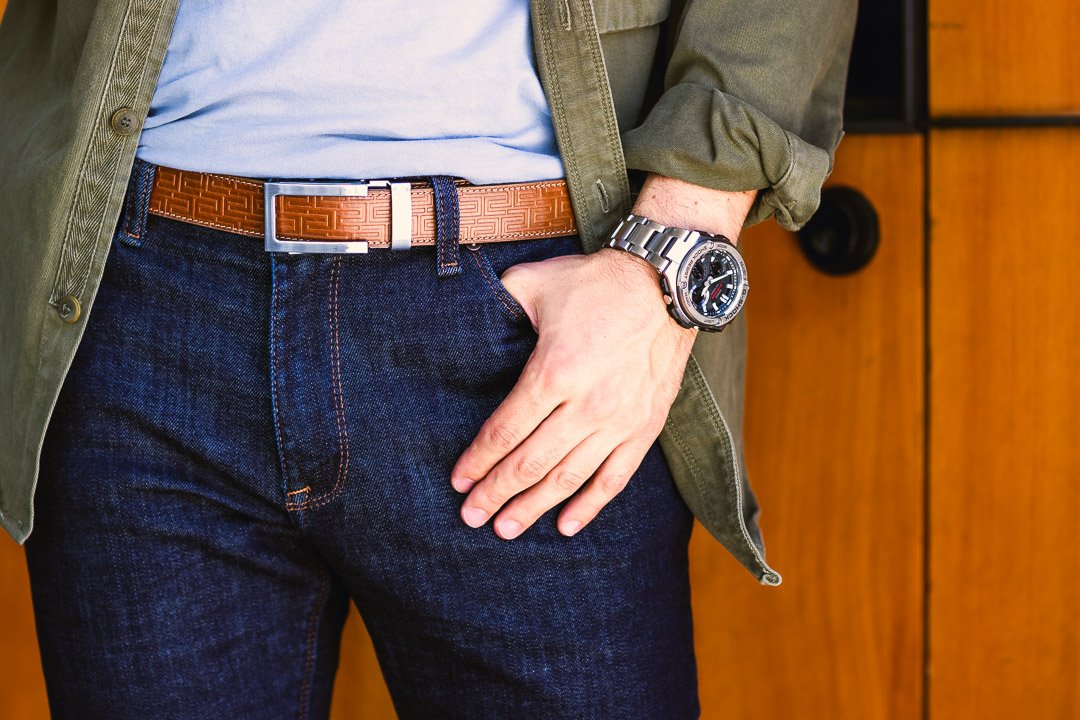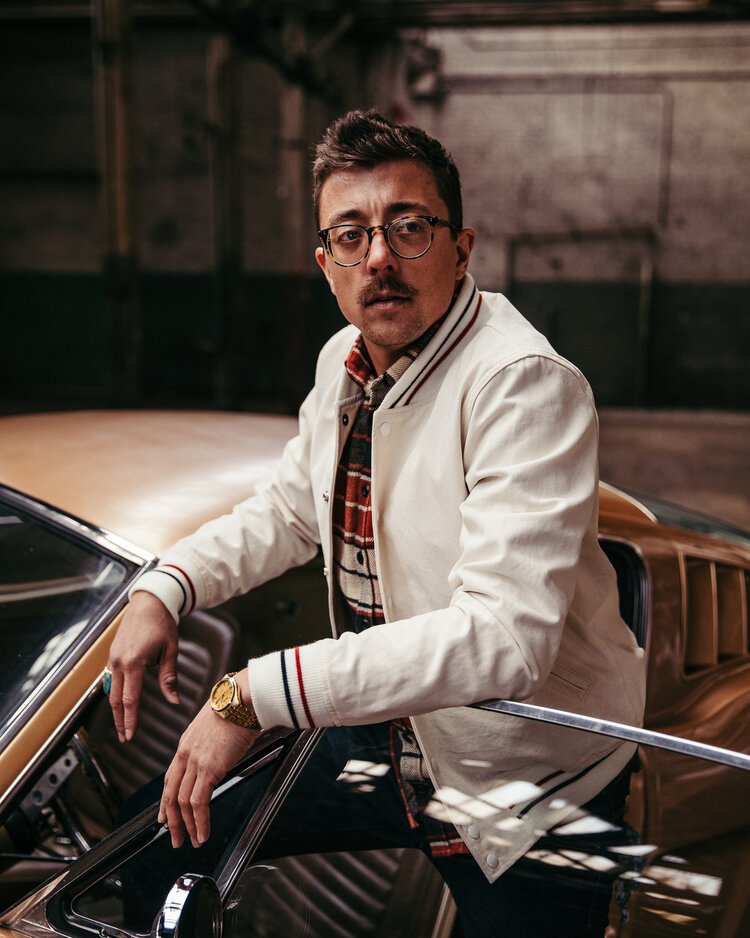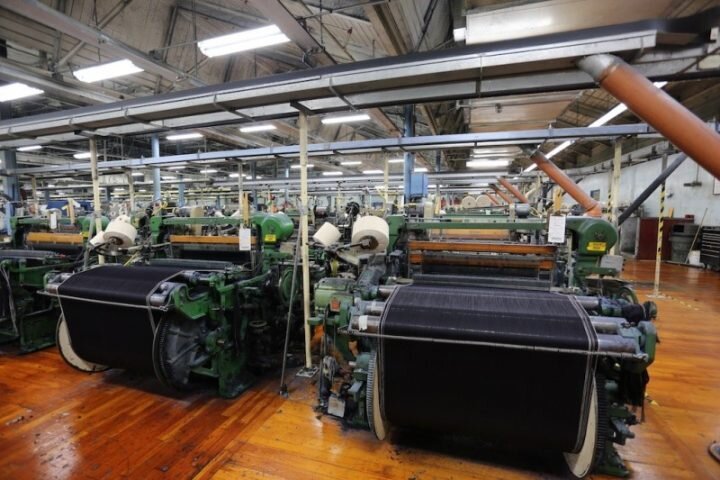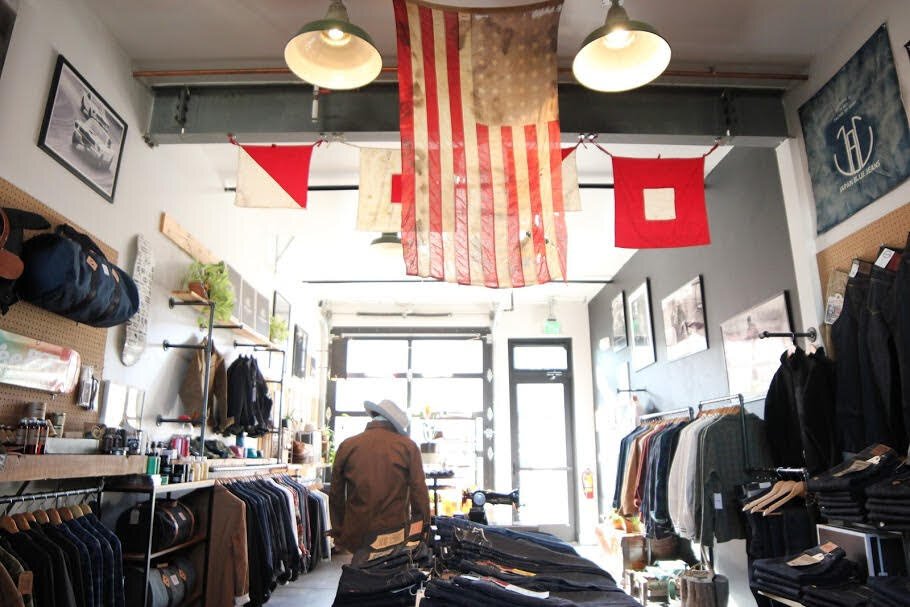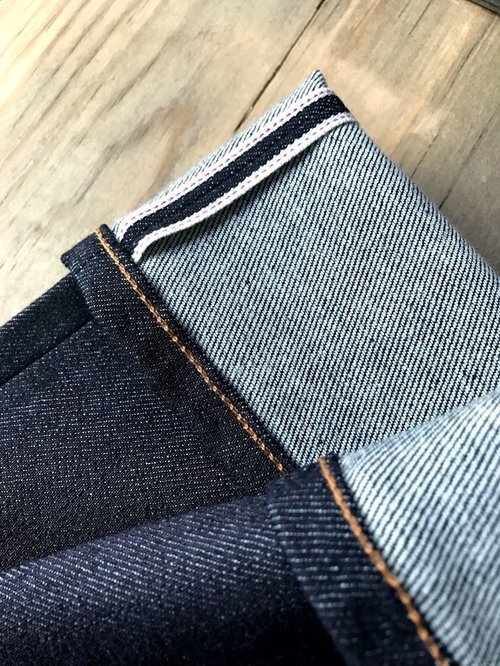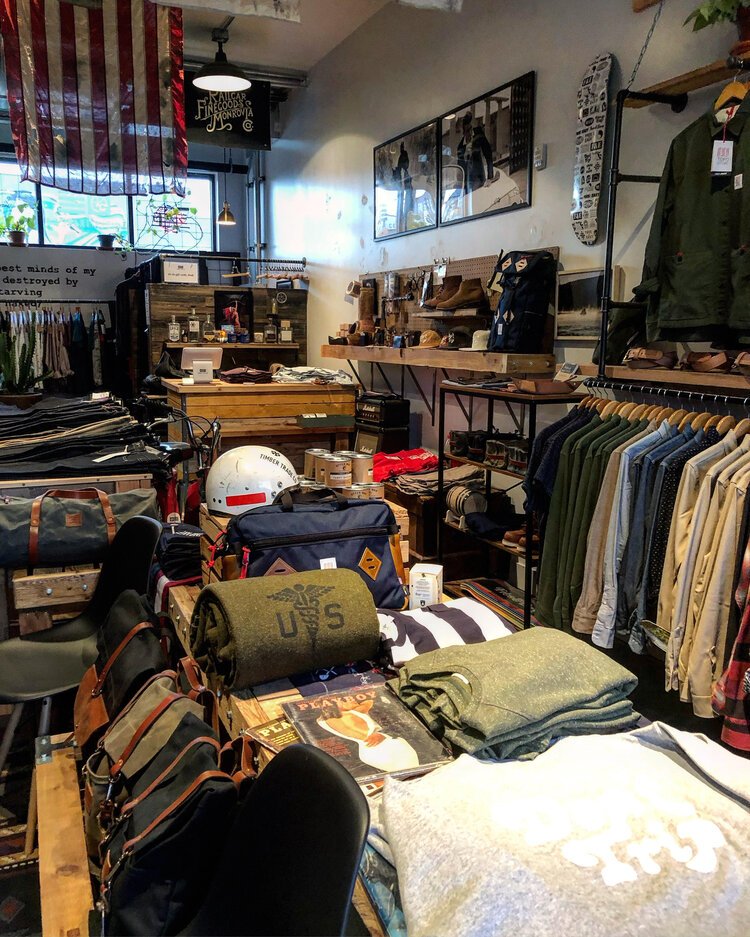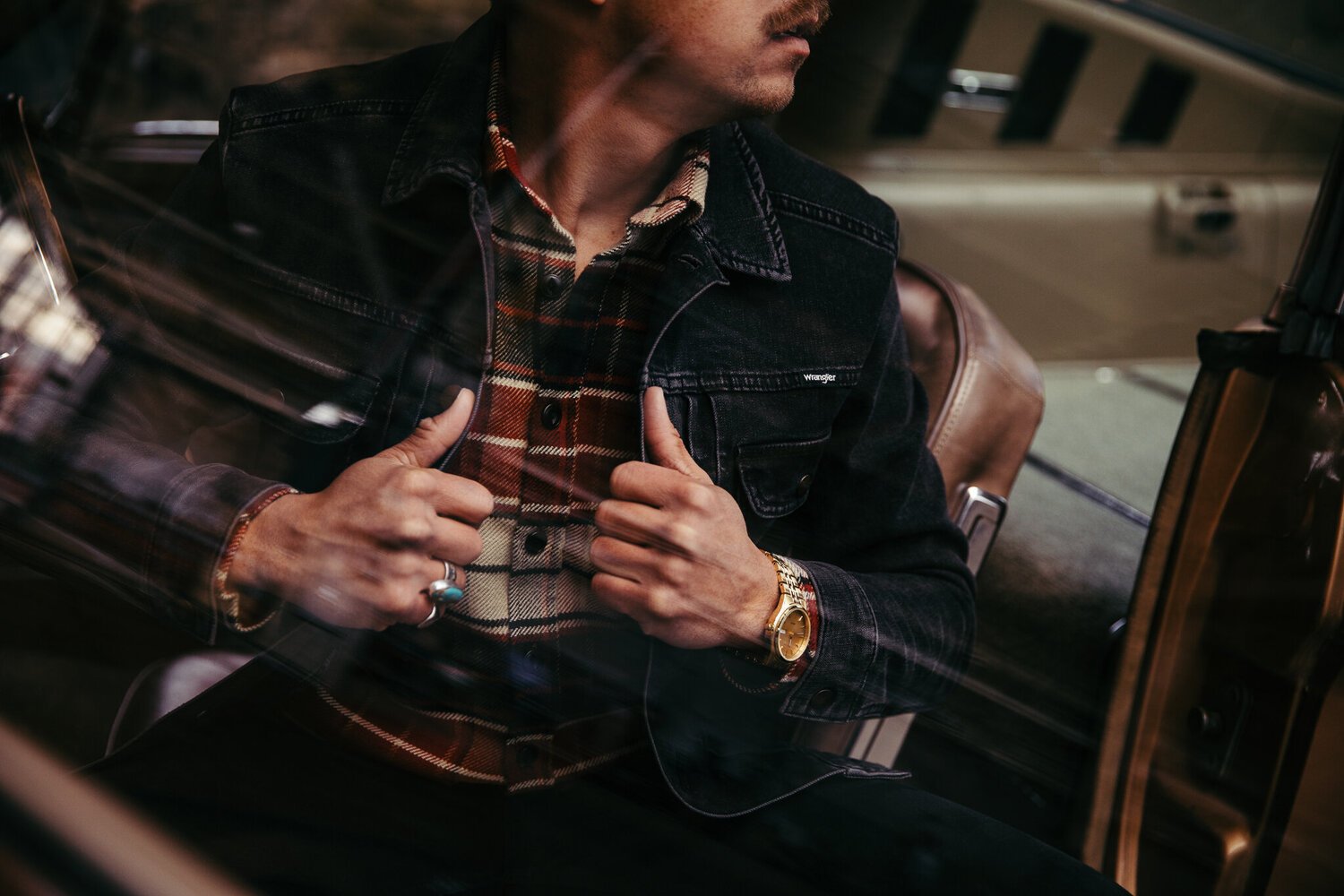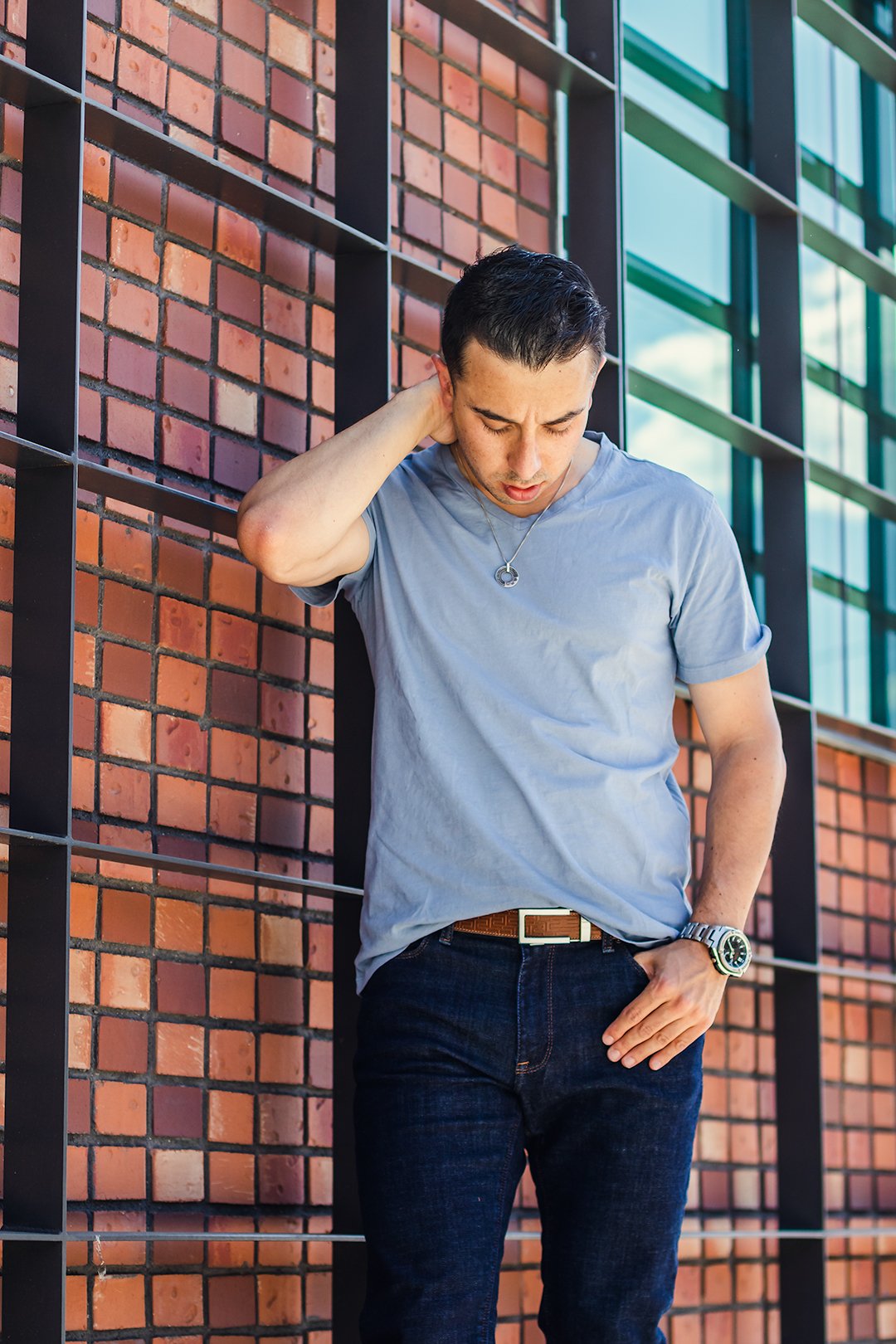WHAT IS SELVEDGE DENIM?
APRIL 24, 2020
What is Selvedge Denim? | Good Quality Jeans and Denim Culture
Before filming this video and getting the chance to talk all things jeans and selvedge denim with Josh Greenlee at Timber Trade Co., I had never actually tried a real pair of selvedge denim. I also didn't understand the hype around it and why there was a community of denim heads that were obsessed with one product.
ARE YOU IN THE SAME BOAT OR ARE YOU A DENIM HEAD?
I didn’t realize the pride associated with the manufacturing process and collecting selvedge denim that fuels the denim head community. In this video, Josh walks us through a lot of selvedge denim and good jean basics. I’m also summarizing the key points from this down below!
TIMBER TRADE CO. - SELVEDGE DENIM AND WESTERN WEAR
Photo from Timber Trade Co. and Andrew Miller
I met up with Josh Greenlee at Timber Trade Co., a local shop in the north RiNo, Denver. Josh’s shop specializes in selvedge denim and western wear. You can feel the love for American heritage style and brands as soon as you walk in the door.
Josh was the perfect expert for this video. He lives and breathes selvedge denim and is a proud member of the denim head community.
In terms of denim, Timber Trade Co. focuses on premium denim fabrics from seed to sew to pattern to cut. Everything they sell in their shop is made ethically and with the highest quality in mind. The key is a good quality fabric and longevity.
“We proudly support products built, stitched, and woven across the United States. Clothing should be functional, timeless, durable, and above all else, worn.
— Timber Trade Co.
Make sure to check out his shop (linked above) and Timber Trade Co.’s Instagram page (here) if you’re a denim and U.S. made fan as well!
SELVEDGE DENIM BASICS
There’s more to a good pair of jeans than just being from a high end shop online or at the mall. In fact, a lot of the mall type retailers are selling mass-produced fabrics and denim. To get a better sense of what good quality denim actually looks and feels like, Josh walked me through the basics.
Photo provided by https://bulletbluesca.com/blog/american-denim-manufacturer-cone-white-oak/
WHAT MAKES GOOD QUALITY DENIM?
Good quality denim comes from the looms. These are the looms that were built and then patented from Levi Strauss back in the late 1800s. In Josh’s opinion, the right way to make denim it is the old heritage way.
These looms were all pre-World War II so there aren’t many left and only a few people that know how to work them. Talk about a rare art form.
MASS PRODUCED DENIM IS WHERE WE LOSE QUALITY
A lot of the fabrics get hand loomed with different tensions and different characteristics in mind. The quality of your denim is all in how its made.
DENIM HEADS AND DENIM CULTURE
Just like sneakers, streetwear, and suits have their own community, selvedge and quality denim also have a tight knit community that treats it like a collector’s club. And just like any of those other groups, denim heads can be a bit intimidating with their selvedge denim, jackets, beanies, boots, and mustaches (ok, only a few have mustaches).
DENIM HEAD CULTURE
I personally follow a few folks and brands (Timber Trade Co. being one) who are heavily involved in denim head culture. To me, it initially seemed more like an impenetrable and intimidating group of people who took selvedge denim very serious. VERY SERIOUS.
Photo from Timber Trade Co.
I was right about one thing: they do take denim seriously. But, as Josh explained to me, it’s because they have a passion for high quality selvedge denim, they want to trade stories and understand what each person is wearing. It’s a collector’s culture where they cheese out about where denim is from, how it’s made, and covet the hard to find pieces.
They’re also happy to educate anyone interested. There’s an eagerness to share their knowledge and invited anyone into the denim head community.
COVETED JAPANESE DENIM
Okayama, Japan is the center of the denim universe as Josh explains it, outside of LA. They have taken the quality (from fabrics to manufacturing) back to where American craft was in the 1940s and 50s.
There is an unparalleled amount of pride that goes into each pair, which gives each one unique qualities. That’s exactly what the denim head community gets excited about and shares together.
SELVEDGE DENIM CONSTRUCTION AND CHARACTERISTICS
Kato Brand Denim, Photo provided by Timber Trade Co.
In a nutshell, selvedge denim means “self-edge,” which refers to the felled seam. There isn’t a lot of craziness to it.
A felled seam means that the patterns are stacked on each other, sewn on the side, and then ironed down flat. That’s what also creates the Selvedge ID (the red detailing on the inside of the cuff) and is unique to every single selvedge loom.
Turns out the cuff detail has meaning and isn’t just a cool design on your jeans.
I’m not the only one who thought that, right? Hence, that’s why the denim head community is more of a collector’s club.
SELVEDGE VS. NON-SELVEDGE DENIM?
In this respect, one of the main differences between selvedge and non-selvedge denim is that the sewing machine has to do additional stitching on a non-selvedge pair at the side of the fabric.
That way the mass-manufactured fabric stays contained without fraying. Thus, the selvedge keeps its own edge. See what happened there?
SELVEDGE DENIM TEXTURE
If you watch the video closely (and all the way through like I know you did), you can see that selvedge denim as quite a bit of texture to it. This comes from how the denim fabric is woven. To get the sort of pronounced texture, the weaves go horizontal and vertical.
Photo from Timber Trade Co.
WARP & WEFT OF SELVEDGE DENIM
The vertical weaving is the warp and the horizontal is the weft. The twill fabric goes over two and under one on the outside, which is the warp. The weft is over two and under on horizontally. That’s what creates the variation in color and the texture.
SELVEDGE DENIM SLUB
Additional texture comes from the slub, or the white dots you can see in the denim.
Slub specifically refers to the thickness of the yarn and on the pair Josh and I looked at, the loom was going slower which created the larger white dot pattern and texture. That mean there is more space between the weaving, or warp and weft.
Don’t worry if you’re feeling a little inundated with selvedge denim terms, I’ll post a short definitions list down below!
SELVEDGE DENIM FADING AND WASHING
It’s cool to fade your jeans. It’s cool to break in your jeans and basically make them a custom pair. A lot of the time, you get to control how the denim fades through good care and select washing.
RAW DENIM
Raw denim hasn’t been washed after manufacturing. And yes, in this case, that’s a very cool thing.
RAW DENIM IS STRAIGHT OUT OF THE LOOM
When you get a raw pair of denim, you’re getting the pair that came straight out of the loom. It’s starched, woven, stitched, and ready for you to make your own.
It also carries great fade potential. That’s when you get those fades as you break in your jeans and the color changes at the tension points like your waist, crotch, thighs, etc. That’s how you know the denim is starting to conform to your body and become your custom pair of jeans.
“What is rigid initially and uncomfortable in some of these fabrics becomes the softest pair of jeans I’ve ever had, and you put in the work.
— Josh Greenlee, Timber Trade Co.
That, my friend, is the draw to buying a really stiff pair of raw denim. If your initial thought was “why?” then think about these like a pair of leather shoes or even those Rainbow flipflops that were borderline bear traps before you wore them in properly.
You’re going to end up with the best fitting pair of jeans. You just have to be willing to put in the work.
SELVEDGE DENIM WASHING
The big question is always about when to wash denim and how often. Josh first noted that before you even give your new selvedge denim a first rinse, you should wait 6 months. This will help build the contrast in your fades and add to the overall fade potential.
Photo from Timber Trade Co.
It may take a year or so for fades to truly set in. Washing frequency all depends on how often you wear the denim. If you’re a daily wearer of the same pair, then 4-6 months may be a good schedule. If it’s less frequent, you may wait longer. The main key is that selvedge denim isn’t just about getting to the final product, it’s the process of breaking them in.
GET THE RIGHT FIT FROM THE BEGINNING
The important part is to get the right fit from the get go. Knowing that it's going to be a little snug and uncomfortable at first, but it's going to wear into the beater.
HOW IS AMERICAN HERITAGE STYLE STAYING CURRENT?
Since we’re talking about a manufacturing process that dates back to the mid 20th century, it’s easy to think that the style would fade. Yet, we’ve seen a resurgence of western/heritage style in mainstream culture and denim isn’t going anywhere either.
Photo from Timber Trade Co. and Andrew Miller
RELEVANCE OF DENIM BRANDS
Denim was initially designed as workwear. Think railroad workers and miners out west. The style then traveled across the globe.
The way that brands are staying relevant is by modifying the construction and silhouettes of the their denim. They’re tapering them and creating more modern fits to bring the style into current times. This is contrary to the original boxy style of workwear denim.
CATCHING HEAT FOR MODERNIZATION
Photo from Timber Trade Co. and Andrew Miller
Some of the original denim brands, like Wrangler for example, are catching backlash for that modernization of their silhouettes.
The way they’ve combatted this is by returning to the quality fabrics and bringing back capsule collections from their heyday. That’s also why we’ve seen a sort of vintage explosion in denim styles.
NOT YOUR $30 PAIR OF JEANS
That western style is coming back but also getting some backlash because it isn’t $30 for a pair of jeans anymore.
That price point isn’t feasible for manufacturers who are going back to the high quality process of creating denim. Just like most quality style pieces, good denim is an investment into something that is going to last and fit like a glove later on.
SELVEDGE DENIM WRAP UP
Be sure to watch the video if you want to go more in depth on the selvedge denim topics I mentioned above. Josh is a wealth of knowledge and his shop, Timber Trade Co. is a great representation of denim and western wear pride.
Be sure to check out is online shop, linked above, and if you’re interested in learning more about fit or how to shop for yourself make sure to send him a message. He’s also offering 20% off your order with code “Thread20.”
I hope you learned just as much as I did about selvedge denim basics and the community that is crazy about it!
SELVEDGE DENIM KEY TERMS AND DEFINITIONS
"Quintessentially Americana" - representative of the heritage of American culture
"Selvedge - 'Self-edge'" - The denim keeps its own edge when sewn.
"Selvedge ID" - Each pair of selvedge denim has its own unique ticker or edge along the inseam of the cuffs. Selvedge denim has the unique white inseam detail.
"Warp & Weft" - Two components of weaving fabric. Warp is the lengthwise yarns held stationary on a frame or loom and weft is drawn through over and under the warp (or in the pattern Josh mentions above).
"Slub" - Refers to the thickness throughout the yarn. Here, it appears as the white specs in the denim.
"Single Rinse" - Refers to raw denim that has been washed once after manufacturing to remove shrinkage.
"Go-To-Battle Stripes" - These are a symbol of Japanese tradition representing honor and strength. These have down their way into denim jackets and selvedge denim from the Japanese manufacturing history.
UNTIL NEXT TIME!
I can’t say thank you enough for reading this through and staying engaged! If you like this style of video and blog, make sure to subscribe to my YouTube channel where I’ll be diving in depth on more topics with experts and sharing style how-to’s and tips.
Stay tuned for the next Style Breakdown!
Cheers,
David Komisarchik; Threadability (@threadability)
Tagged: selvedge denim, what is selvedge denim, good jeans, denim head, denim culture, jeans, denim, japanese denim

